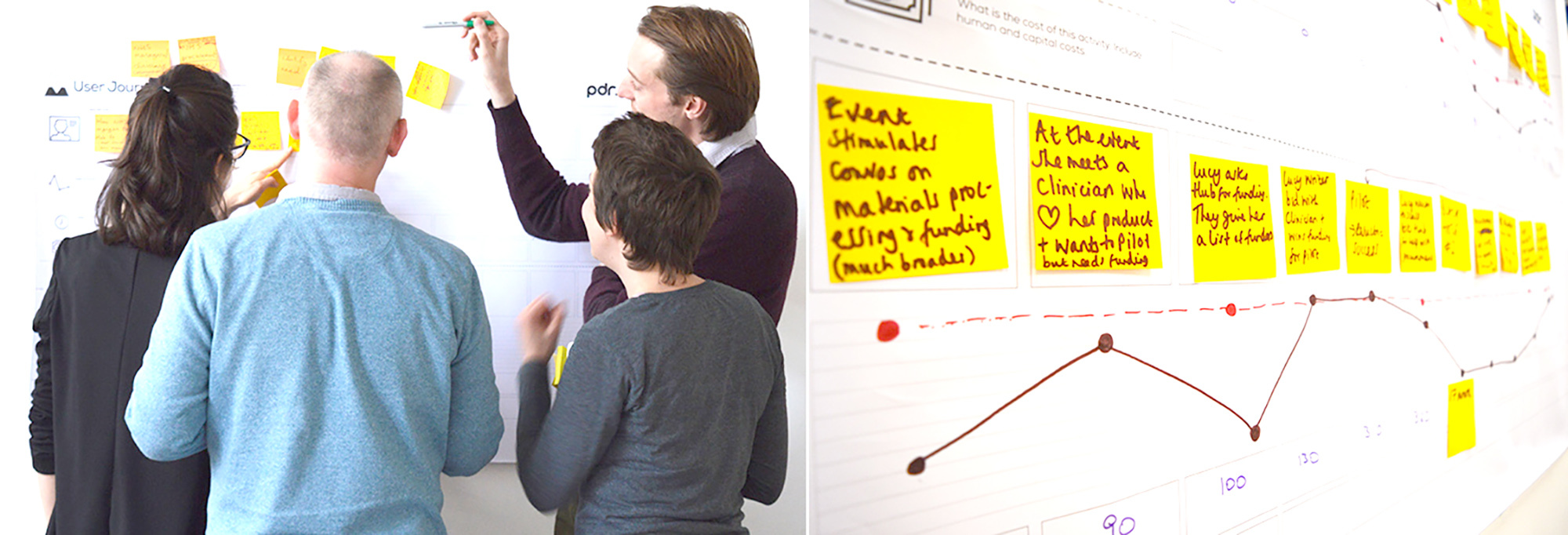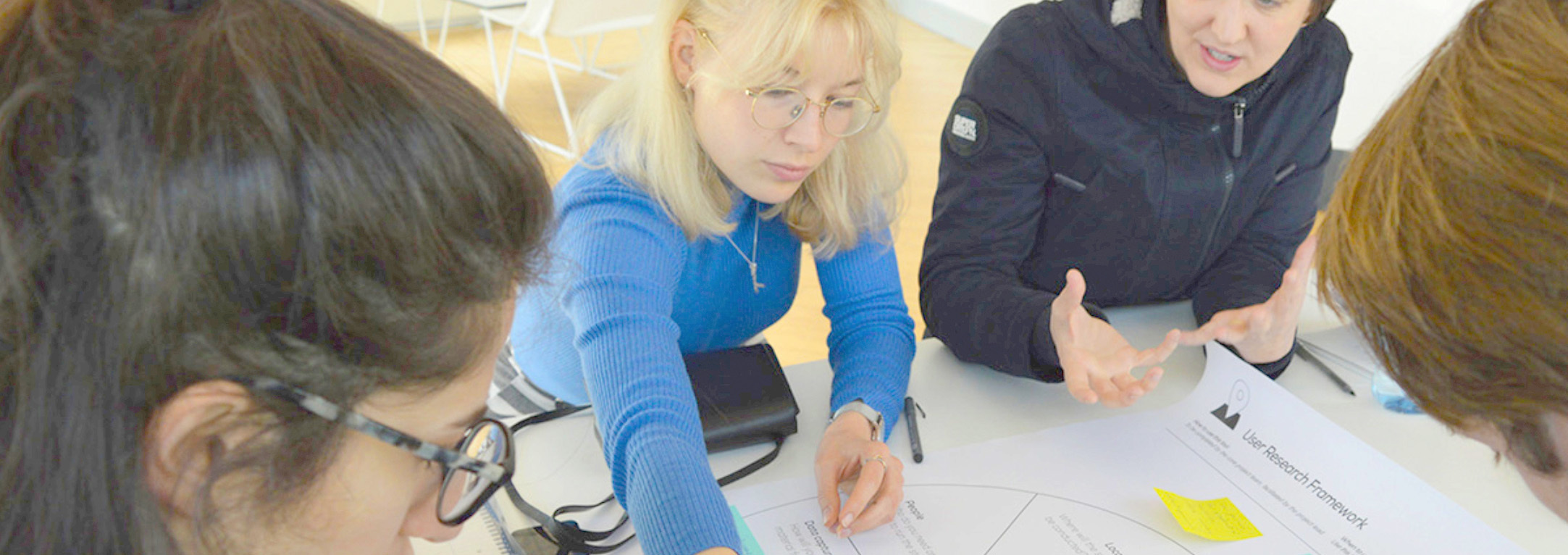Greenhouse April 2018
Greenhouse is PDR’s ‘roll your sleeves up’ training in service design and policy design. For the April instalment, we had participants from HMRC, Northern Ireland Innovation Lab, Valletta Design Cluster, Financial Conduct Authority, Cisco, St John’s Ambulance, Faculty of Design at the University of Primorska in Slovenia, Department for Education, the charity sector, and Future Cities Catapult. In order for the groups to apply the tools and techniques in a practical scenario, the Life Sciences Hub nominated a challenge for us to work on.
Established in 2014, the Hub is an arms-length body of the Welsh Government with swanky offices in a prime location in Cardiff Bay. The Hub's original mandate was to support businesses in the life sciences sector in Wales however it has recently undergone a repurposing process.
As part of a new focus on developing opportunities for creating value from NHS-industry engagement, and connecting all stakeholders in the life sciences sector with the NHS, the challenge set for Greenhouse was:
How can we effectively engage with users? What is the user journey? What is the offer?
Against the backdrop of this challenge, over two and a half days, the participants explored a series of service design and policy design tools including Problem Definition, Stakeholder Mapping, Policy Mapping, User Research Framework, Insights Downloading, User Journey Mapping, Ideation, Storyboarding and Paper Prototyping.

User Insights
The groups were able to conduct user research and put the User Research Framework into action by interviewing staff at the Hub, small businesses and bid development experts. Based on this exercise, the teams identified a series of striking user insights.
User Journey Mapping
A key exercise that was particularly relevant in this process was user journey mapping, identifying all the stages at which small businesses engage with the Hub from the first time they hear about the Hub through to applying for the NHS procurement framework. The exercise enabled the participants to pinpoint the pressure points in the current engagement process and to identify opportunities for further improvement.

Ideation
Having tried their hand at user research, user journey mapping and consolidating their insights, the groups turned to ideas generation. We guided the groups through a series of different ideation techniques and they were able to focus on the ideas that inspired them the most. The ‘Procurement Light’ team explored how the Hub might add value for small firms looking to get onto the NHS procurement framework by setting up a dedicated function within the Hub. The ‘Matchmaking’ group proposed a dating-style app using an algorithm to match small businesses with NHS staff. The ‘Focus’ team proposed a step-by-step process following a design methodology focused on the needs of users (small businesses/NHS) rather than stakeholders (Welsh Government/funders).
Feedback from Life Sciences Hub
The Hub was overwhelmed by the insights and ideas generated by the groups. In particular, the insights gathered resonated with observations they had already made. They recognised the need to focus on a small number of service offerings and engage more effectively to support SMEs to scale ‘Mount Procurement’. Effectively, what the groups designed was a more user-centred approach to engagement and the Life Sciences Hub is now considering whether a design approach might be effective for understanding the real needs of small businesses and NHS staff.
Read reflections on Greenhouse by one of the participants: https://brilliantminds.blog/2018/05/02/three-things-ive-learned-about-design/
If you are interested in finding out more about Greenhouse or would like to join us on the next one, please contact Piotr on pswiatek@pdr-design.com.

